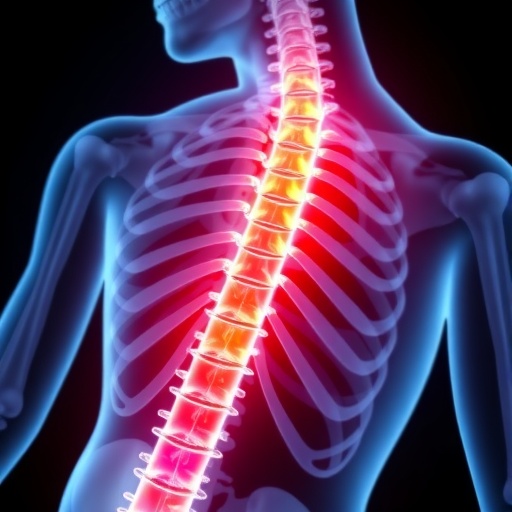Researchers at Case Western Reserve University seek to optimize emerging methods of diagnosing two common neurodegenerative diseases — dementia with Lewy bodies and Parkinson’s disease dementia — which affect 1.4 million in the United States

Credit: Case Western Reserve University
With a $5.5 million, five-year award from the National Institutes of Health (NIH), researchers at Case Western Reserve University will seek to systemize new diagnostic tests for dementia with Lewy bodies and Parkinson’s disease dementia–together the second-most-common dementias after Alzheimer’s disease.
Establishing quick and reliable testing methods for these neurological conditions–using tissue samples from non-traditional sources, such as skin, nasal mucosa, or the colon–could eventually allow doctors to diagnose patients earlier and more easily.
Researchers will use real-time quaking-induced conversion (RT-QuIC), a relatively-new technology developed in Japan, to hone the identification of telltale protein deposits in areas of the body outside of where the disorders develop in the brain.
The results could eventually help doctors track the levels and distribution of the proteins–known as alpha-synuclein, or “Lewy bodies”–across tissue sites during different stages of these dementias, as well as their correlation with symptoms.
“The potential of using tissues outside the brain to assess brain disorders is highly innovative,” said Shu Chen, an associate professor of pathology and neurology at the Case Western Reserve School of Medicine. “Validating this method could have tremendous implications for more definitive diagnoses, the monitoring of disease progression–and eventually, the development of potential therapeutics for patients.”
Allison Kraus, an assistant professor in the medical school’s Department of Pathology and a neurodegenerative disease specialist, will serve as the project’s co-principal investigator with Chen, a neurobiologist and Parkinson’s disease researcher.
The two diseases are caused by the buildup of the Lewy bodies in the nerve cells of brain regions associated with memory, thinking and other mental abilities; patients can also develop tremors, lose movement and other physical symptoms.
While the clinical procedures for collecting these biospecimens–such as tiny skin punches, nasal swabs and colon biopsies–are well established, Chen, Kraus and colleagues will seek to develop high levels of diagnostic accuracy for each tissue source.
“Identifying where and when the proteins of neurodegeneration occur outside the brain will help not only with patient diagnosis, but potentially their prognosis as well,” Kraus said. “To be able to have ultrasensitive measures of disease-specific proteins in peripheral body tissues as specific and accessible biomarkers is an exciting step towards diagnosis, treatment and the development of therapeutics for these diseases.”
The medical community has long noted the presence of certain initial symptoms in patients that appear before dementias develop–including the loss of smell and constipation. In recent years, researchers have linked these dysfunctions to alpha-synuclein deposits. RT-QuIC technology has made the identification of such deposits easier and more efficient.
Lewy body dementia is often confused with other forms of dementia, such as Alzheimer’s, which is characterized by an accumulation in the brain of a different protein–known as tau–said Kraus, who is also developing tau-specific markers using RT-QuIC technology.
“The condition is frequently misdiagnosed or underdiagnosed during life,” she said. “We are seeking to differentiate Lewy body dementia from Alzheimer’s disease and other types of dementia, which could eventually improve patient care.”
###
The award is jointly funded by two divisions of NIH–the National Institute on Aging and the National Institute of Neurological Disorders and Stroke.
Also part of the team are scientists from University Hospitals Cleveland Medical Center, Cleveland Clinic Lou Ruvo Center for Brain Health in Las Vegas, NIH Rocky Mountain Laboratories and three European institutions.
- Steven Gunzler, Brian Appleby, and Curtis Tatsuoka, from the Department of Neurology, University Hospitals Cleveland Medical Center, and Case Western Reserve University School of Medicine;
- Xiongwei Zhu, from the Department of Pathology, Case Western Reserve University School of Medicine;
- Clifford Harding, from the Department of Pathology, Case Western Reserve University School of Medicine, and Diagnostic Institute, University Hospitals Cleveland Medical Center;
- Linda Cummings, Minh Lam, and Fabio Cominelli from the Cleveland Digestive Diseases Research Core Center (DDRCC), University Hospitals Cleveland Medical Center and Case Western Reserve University School of Medicine;
- Marwan Sabbagh, Zoltan Mari, and Jiong Shi, from Cleveland Clinic Lou Ruvo Center for Brain Health in Las Vegas;
- Byron Caughey, from NIH/NIAID Rocky Mountain Laboratories, Hamilton, Montana;
- Gianluigi Zanusso, from University of Verona in Italy;
- Kathrin Doppler, from University of Wurzburg in Germany; and
- Fabio Moda, from IRCCS Istituto Neurologico C. Besta in Italy.
This project is supported by NIH grant award R01 NS118760.
Media Contact
Daniel Robison
[email protected]
Original Source
https:/




